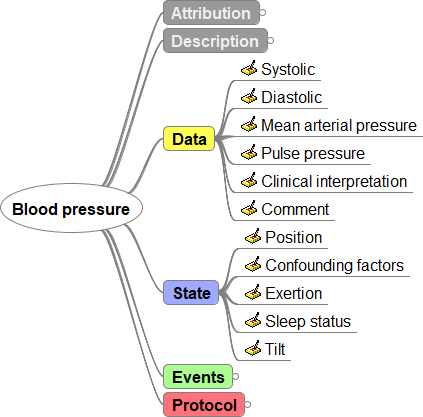openEHR
The open IT platform for data-driven medicine
openEHR is an open standard for developing electronic patient records and free platform architectures that facilitates the development of interoperable healthcare application and research systems. The standard includes the definition of clinical information models for the storage and cross-location exchange of patient data. These models are being developed for worldwide use in cooperation with international partners. This enables data exchange across countries. The diverse applications of this approach range from clinical application systems and registries to research databases and health apps on the patient's smartphone.

Technology
openEHR maps clinical concepts in reusable models, so-called archetypes. An archetype groups all data elements that can be relevant for the documentation of a clinical concept. Archetypes are standardised on a national and international level.
Archetypes and Templates
Archetypes are combined into templates according to the application-specific modular principle. The modular principle allows each archetype to be reused in other templates with alternative medical contexts. Templates serve as a basis for the creation of database schemata and clinic-specific forms.
Modeling Process
Medical information managers, so-called data stewards, categorise the requirements of clinical experts, assign existing standards and terminologies or create new archetypes. The clinical experts review the archetypes in multi-stage coordination procedures, the so-called reviews, in order to finally reach a consensus. The archetypes standardised in this way can then be used for data integration and data retrieval.
Outlook
Increasing digitalisation in the healthcare sector opens up new opportunities to better use patient data for care and research. In order to meet the changing requirements of the health care system, an openly specified IT platform is used for the processing of health data. Our interoperable approach enables exchange with other standards such as FHIR (Fast Healthcare Interoperability Resources) and OMOP (Observational Medical Outcomes Partnership). The national and international exchange of data enables the cross-institutional use of large databases and their statistical analysis in order to identify unknown relationships between risk factors and diseases. This allows new treatment approaches to be created in order to personalise therapies in the future, to detect diseases at an early stage and to initiate targeted prevention.
Video
Italian openEHR day 2019
openEHR experiences in academia and industry
From 01:14:00 Antje Wulff gives an insight into the principle of open platform architectures for healthcare and the HiGHmed project. The cross-institutional governance process for the development and coordination of openEHR-based clinical information models and the current state of modelling are presented.
Downloads
Poster: Die offene IT-Plattform für die datengetriebene Medizin mit openEHR
Sarah Ballout, Pascal Biermann, Matthias Gietzelt, et al.